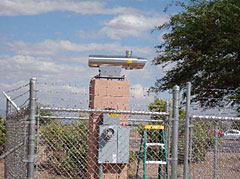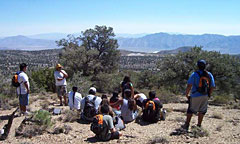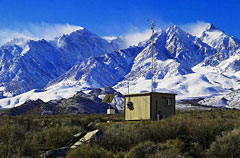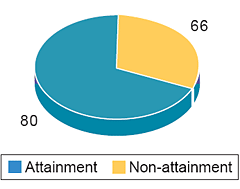Pacific Southwest, Region 9
Serving: Arizona, California, Hawaii, Nevada, Pacific Islands, 148 Tribes
Clean Air
Clean Air





EPA and Tribes Collaborate to Improve Air Quality
During 2007, EPA worked closely with tribes to assess and improve air quality in Indian Country. The results include education and outreach to tribes, as well as new air quality standards, regulations, and plans.
EPA Grants are the Foundation of Tribal Air Quality Work
EPA awarded 25 tribal air grants, totaling just over $3 million. Five tribes also used part of their GAP grants to assess air conditions. Four tribes received radon grants to assess and reduce radon levels in their homes. Twenty-four tribes are monitoring either particulate matter or ozone (smog).
Tribes’ Collaboration Brings Greater Return on Investments
A partnership between the Salt River Pima Maricopa Indian Community and the Arizona Department of Environmental Quality led to the installation of a special monitor at the confluence of two of the most heavily traveled freeways in the Phoenix area. This Differential Optical Absorption Spectroscopy (DOAS) Monitor continuously measures air toxics and pollutants regulated by federal clean air laws. It is one of the most advanced monitors of its kind, and the only one located in the Southwest.
Three tribes in California’s Owens Valley — Lone Pine, Fort Independence, and Bishop — continue to work with other nearby tribes and the Great Basin Unified Air Pollution Control District as they assess the impacts of the Owens Dry Lake, the largest source of fine particles such as dust and smoke in the nation. In addition, those three tribes participate in the Tribal Environmental Exchange Network, a system that makes air quality and meteorological data available in real time on the Internet, facilitating region-wide data analysis.
New Tribal Regulations Delegate Certain EPA
Air Programs to Tribes
The Gila River Indian Community (GRIC) submitted a Tribal Implementation Plan, which is a set of programs and regulations to ensure air quality standards are met and maintained. EPA Region 9 is reviewing the GRIC's proposal. When approved, it will delegate many EPA air programs to the tribe. In addition, the Pala Band and the Fort Independence Tribe recently applied for Treatment as State status to be notified of permits for large sources of air pollution nearby.
New Rules Will Help Ensure Economic Growth Occurs in Harmony with Clean Air Goals
EPA is continuing to move forward with new clean air regulations for Indian country, such as the Tribal New Source Review requirements proposed in 2006. These apply to permits for new and modified stationary sources of air pollution. The rules are important because they close a loophole that has allowed some polluters to evade compliance on tribal lands. The new regulations would require new or modified small industrial facilities and large industrial facilities on tribal lands to get permits.
New Plan, Permit for Projects on Navajo Lands Draw Public Interest
EPA completed a Federal Implementation Plan for the Four Corners Power Plant, establishing federally enforceable emission limits for several pollutants, including a substantial reduction in the allowable amount of sulfur dioxide emissions. However, the Arizona Public Service Corporation and the Sierra Club have challenged EPA's action in federal court, and the case is still pending.
EPA worked closely with the Navajo Nation on the permit for the proposed new Desert Rock coal-fired power plant. EPA proposed a "Prevention of Significant Deterioration" permit for the Desert Rock facility. The project is controversial because many people are opposed to new coal-fired power plants in this area. In 2006, more than 1,000 comments were submitted on the proposed permit. EPA is now responding to these comments.
Pacific Southwest Tribes Located in Air Quality Non-Attainment Areas

| Pacific Southwest NewsroomPacific Southwest Programs | Grants & FundingUS-Mexico Border | Media Center Careers | About EPA Region 9 (Pacific Southwest)A-Z Index |
